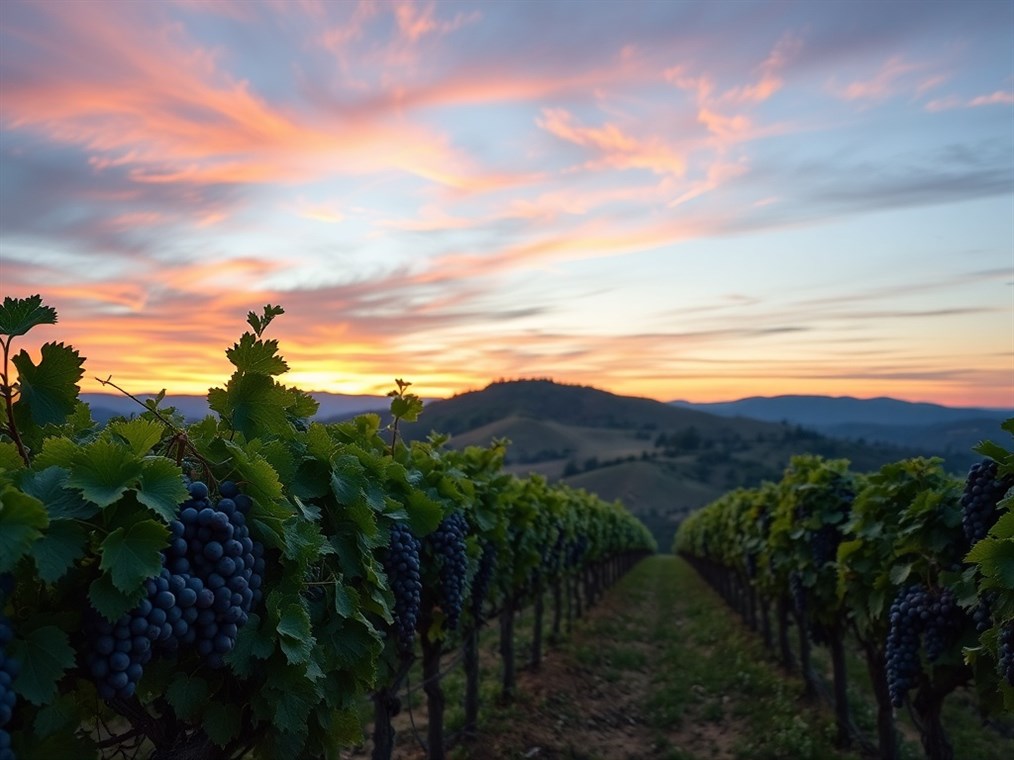Pinot Noir: More Than Just a Fancy Name
Pinot Noir. Say it out loud. Doesn’t it just sound sophisticated? But beyond the elegant name, what’s the real story with this wine? Let’s uncork the secrets of Pinot Noir, from its humble beginnings to its place as a darling of wine lovers everywhere.
So, where did this Pinot Noir craze even start? Well, picture this: centuries ago, in the rolling hills of Burgundy, France, monks were carefully cultivating grapes. Some say its origins trace back even further, perhaps to ancient Egypt. Regardless, Burgundy became its heartland, the place where Pinot Noir truly took root and flourished. In fact, the first mention of it dates all the way back to 1345! The name itself is a bit of a giveaway: “Pinot Noir” translates to “pine black,” a nod to the pinecone shape of the grape bunches and their dark hue. Pretty neat, huh?
But here’s the cool part: Pinot Noir didn’t stay put. It hopped across borders and oceans, finding new homes in cooler climates around the globe. You’ll find it thriving in Switzerland, Germany, even down in New Zealand and Australia. And let’s not forget the good ol’ US of A, with California and Oregon making some seriously delicious Pinot Noir. California tends to go big on the fruit flavors, while Oregon aims for that perfect balance. It’s like a Pinot Noir adventure, tasting the differences from each place!
Now, let’s get down to what makes Pinot Noir Pinot Noir. Unlike those heavy-hitting Cabernet Sauvignons, Pinot Noir is more of a lightweight. Think of it as the silk scarf of red wines – delicate and smooth.
We’re talking light to medium body, a color that’s more ruby than deep garnet, and tannins so gentle they barely whisper on your tongue. And that bright acidity? It’s like a little jolt of freshness that keeps you coming back for more. Oh, and the alcohol level? Usually hangs out in that 12-15% range, making it a pretty easygoing wine.
Okay, flavor time! This is where Pinot Noir really shines. It’s a chameleon, changing its spots depending on where it’s grown. But generally, you can expect a burst of red fruit – think cherries, raspberries, and strawberries dancing on your palate.
But wait, there’s more! Often, you’ll get these earthy notes creeping in, like a walk in the woods after a rain. Mushroom, forest floor, that kind of thing. And if it’s been aged in oak, you might catch a whiff of vanilla or baking spice. Some even have floral hints, like rose petals. It’s a complex little wine, full of surprises.
Here’s a wine geek word for you: terroir. It’s basically the idea that the environment – the soil, the climate, the winemaker’s touch – all shape the wine. And Pinot Noir? It’s a terroir superstar. That’s why a Pinot from Burgundy will taste totally different from one from California. It’s all about the place!
So, you’ve got a bottle of Pinot Noir. What do you eat with it? This is where it gets fun, because Pinot Noir is a food-pairing rockstar.
Duck is a classic for a reason – the wine’s acidity just slices through the richness. Salmon? Yes, please! Mushrooms? Absolutely. It’s also fantastic with grilled steak, roast chicken, even pork or lamb. Cheese-wise, think brie, goat cheese, or something a little smoky. And for the vegetarians out there, it’s a dream with spring veggies and creamy risottos. Just steer clear of super sweet stuff – that’s not its jam.
Want to really impress your friends? Serve your Pinot Noir slightly chilled – around 55–65°F. Not ice-cold, just a little cooler than room temperature. And if you’re planning on cellaring it, keep it in a cool, dark place away from vibrations. Think wine cave, not washing machine.
Speaking of aging, some folks think Pinot Noir is best drunk young, all bright and fruity. But a good bottle can age gracefully for 5-10 years, sometimes even longer. It’ll develop those earthy notes and get even more complex.
Bottom line? Pinot Noir is a wine that’s worth exploring. It’s complex, it’s versatile, and it’s just plain delicious. So, grab a bottle, invite some friends over, and get ready to discover your own Pinot Noir story. Cheers!

